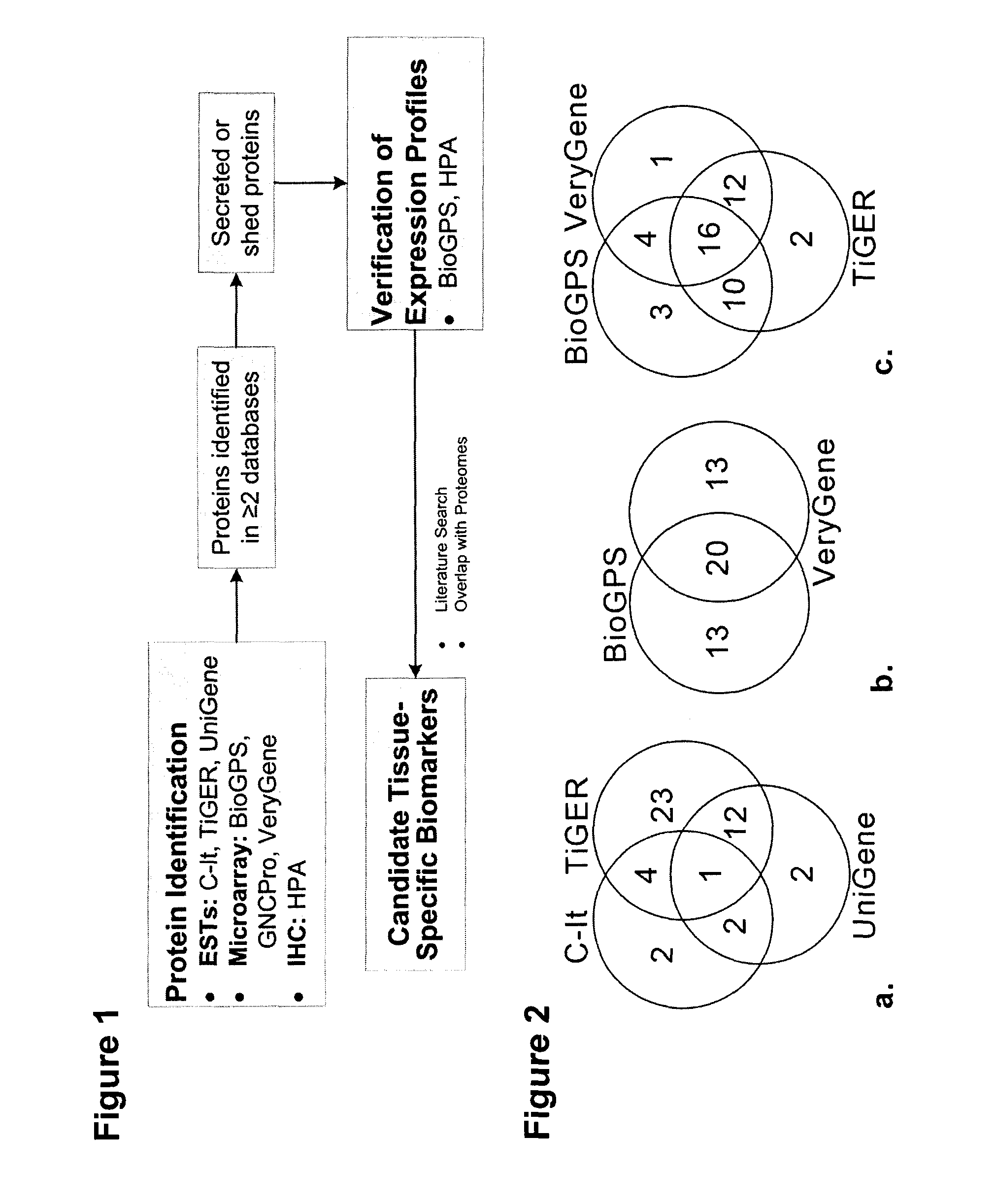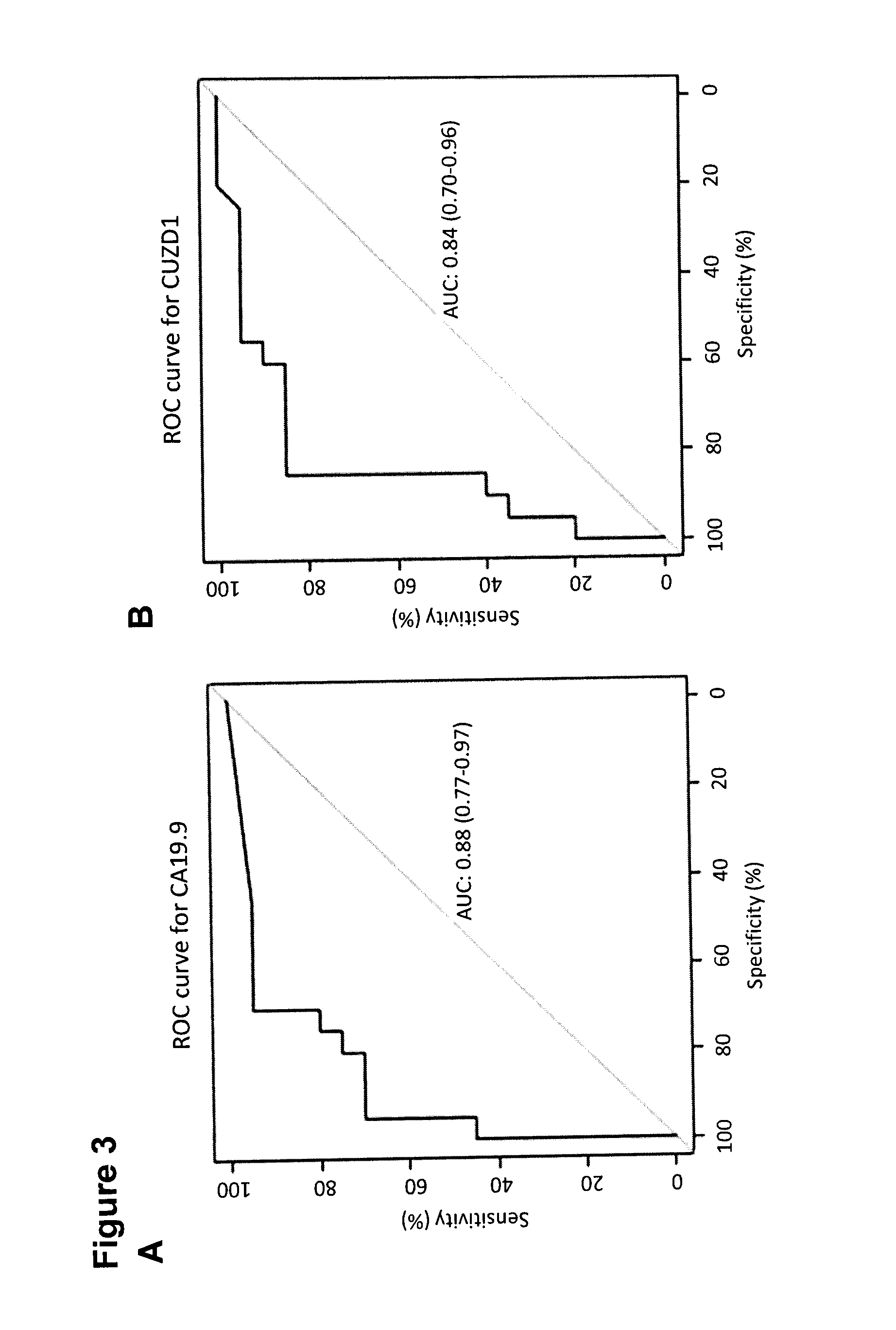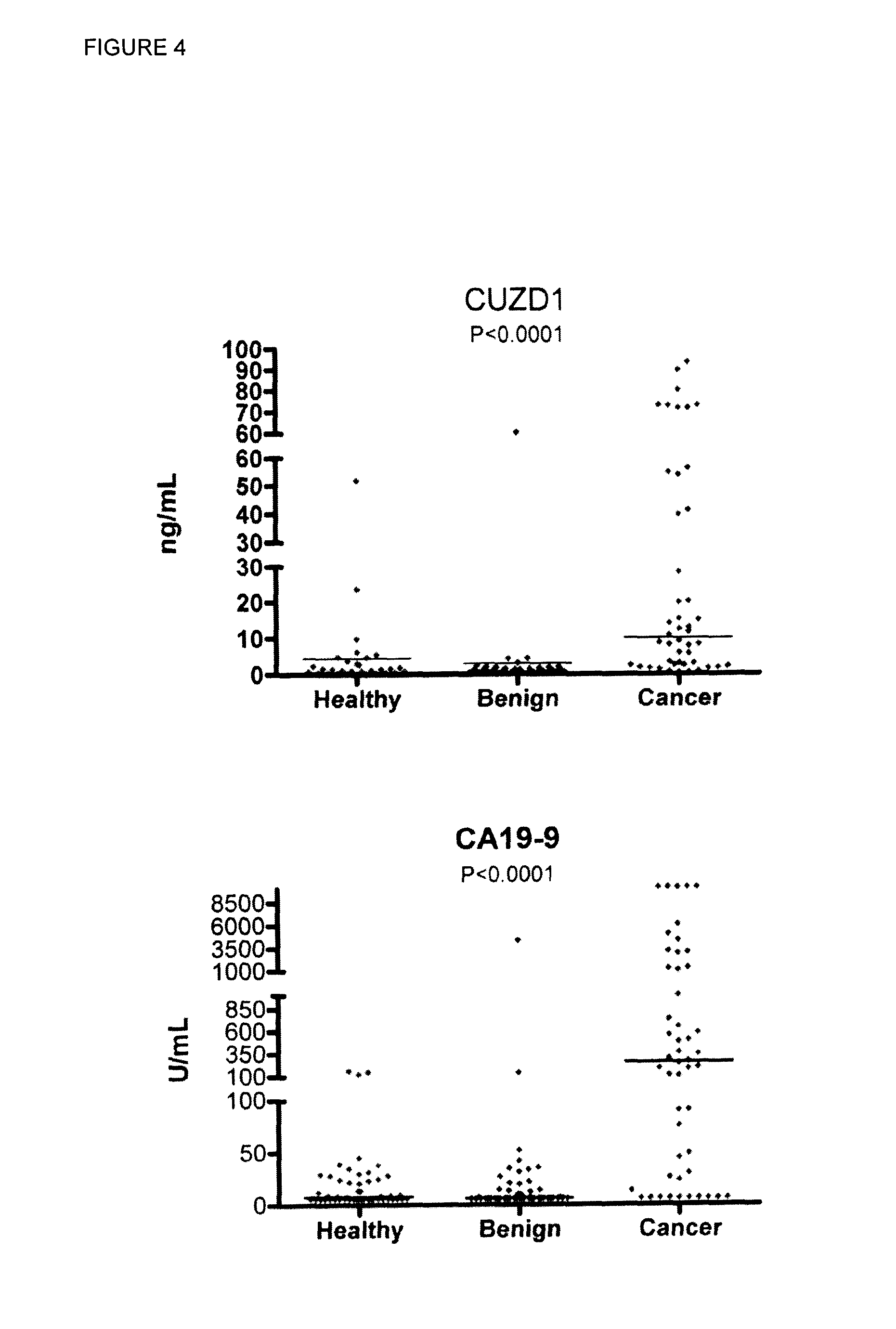Cancer Biomarkers and Methods of Use
a biomarker and cancer technology, applied in the field of cancer biomarkers, can solve the problems that current serological biomarkers lack the appropriate sensitivity and specificity to be suitable for early cancer detection, and achieve the effect of increasing the probability of having
- Summary
- Abstract
- Description
- Claims
- Application Information
AI Technical Summary
Benefits of technology
Problems solved by technology
Method used
Image
Examples
example 1
Background
[0227]There is an important need for the identification of novel serological biomarkers for the early detection of cancer. Current biomarkers suffer from a lack of tissue-specificity, rendering them vulnerable to non-disease-specific increases. The present study details a strategy to rapidly identify tissue-specific proteins using bioinformatics.
Methods
[0228]Previous studies focus on either gene or protein expression databases for the identification of candidates. An strategy was developed that mines six publicly available gene and protein databases for tissue-specific proteins, selects proteins likely to enter the circulation, and integrates proteomic datasets enriched for the cancer secretome, to prioritize candidates for further verification and validation studies.
Results
[0229]Using colon, lung, pancreas, and prostate cancer as case examples, 48 candidate tissue-specific biomarkers were identified.
Conclusions
[0230]A novel strategy using bioinformatics to identify tissue...
example 2
Methods
in Silico Discovery
[0231]Seven gene and protein databases were mined to identify proteins highly specific to or strongly expressed in one tissue. Colon, lung, pancreatic, and prostate tissues were examined.
[0232]Each tissue was searched in the C-It database [10] for proteins enriched in the selected tissue (human data only). Since the C-It database did not have colon data available, only lung, pancreas, and prostate tissue were searched. Literature information search parameters of fewer than five publications in PubMed and fewer than three publications with the Medical Subject Headings (MeSH) term of the searched tissue were used. The option of adding z-scores of the corresponding SymAtlas microarray probe sets to the protein list was included [16]. Only proteins with a corresponding SymAtlas z-score of ≧|1.96|, corresponding to a 95% confidence level of enrichment, were included in the lists. Proteins without a SymAtlas z-score were ignored. The TiGER database [12] was searc...
example 3
CUZD1
[0267]Pancreatic cancer is the fourth leading cause of cancer-related deaths and one of the most highly aggressive and lethal of all solid malignancies [50]. Because of the asymptomatic nature of its early stages, coupled with inadequate methods for early detection, the majority of patients (>75%) present with locally advanced and inoperable disease at the time of diagnosis [50]. At these advanced stages, chemotherapy, radiation, and combinatorial therapies are largely anecdotal, and less than 5% of patients survive up to five-years post diagnosis [50, 75].
[0268]One way to aid in the clinical management of cancer patients is through the use of serum biomarkers. Currently, the most widely used biomarker for pancreatic cancer is carbohydrate antigen 19.9 (CA19.9), a sialylated Lewis A antigen found on the surface of proteins [5, 76]. Although CA19.9 is elevated mainly in late stage pancreatic cancer, it is also elevated in benign diseases of the pancreas and in other malignancies...
PUM
| Property | Measurement | Unit |
|---|---|---|
| concentration | aaaaa | aaaaa |
| concentration | aaaaa | aaaaa |
| concentration | aaaaa | aaaaa |
Abstract
Description
Claims
Application Information
 Login to View More
Login to View More - R&D
- Intellectual Property
- Life Sciences
- Materials
- Tech Scout
- Unparalleled Data Quality
- Higher Quality Content
- 60% Fewer Hallucinations
Browse by: Latest US Patents, China's latest patents, Technical Efficacy Thesaurus, Application Domain, Technology Topic, Popular Technical Reports.
© 2025 PatSnap. All rights reserved.Legal|Privacy policy|Modern Slavery Act Transparency Statement|Sitemap|About US| Contact US: help@patsnap.com



